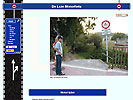
Every motorcyclist knows them, the lesser moments:
You have crashed, and you are struggling to get you confidence back. You can't get yourself to enter corners as fast as you wish, or you are afraid of locking your front wheel every time you brake.
How do you cope? You have to get over it, some people will tell you. But how do you do that? Is there such a thing as getting over your fear? If not, how to get rid of your fear?
This page tries to formulate an answer.
![]() Er is een Nederlandse versie:
Er is een Nederlandse versie:
https://www.luiemotorfiets.nl/tips/angst/
Not enough fear

Fear is a man's best friend... : John Cale sings, and he is right.
You probably have a bigger problem when you have not enough fear on your motorcycle,
than when you are stuck with too much of it.
Unnoticed
A lack of fear often sneaks in slowly: you did get your driver's license, you buy your first motorcycle, you ride your first kilometers (or miles) without an instructor telling you what to do, you take your motorbike on your first motorbike holiday, you ride your first mountain pass, your first hairpins, and you feel more and more at home in the saddle.
Everything you do on your bike succeeds, and while you did feel more or less intimidated by the motorcycle when you started riding, you now start feeling that you and your bike can do everything together. Everything seems possible now.
Too much confidence in yourself or your motorcycle
Lack of fear doesn't even have to mean that you have more confidence in your own
capacities than can be justified objectively; you could also have too much confidence
in the capacities of your motorcycle:
You are certain that your motorcycle's capabilities
are far beyond what you will ever be capable of, and that you, as a consequence,
will always ride below the capabilities of your motorbike.
And then, on a good (or bad) day, something unexpected happens.
That corner suddenly becomes really narrow, and you force your motorcycle into a
smaller lean-angle than it is capable of.
(and beside that, at this point you probably did recieve some letters from the cops...)
Or a tractor appears from behind the bushes, and you really have to brake hard, and before you know what happens, you and your motorcycle slide upon the road surface.
The balance
It's hard to find the right balance: too much fear is bad for your riding technique; too little is dangerous.
Enjoy when everthing seems to be perfect, but be suspicious when it seems to happen more and more often. When you start forgetting that you are an eternal student on the subject of motorcycle riding (everybody is, maybe Valentino Rossi excluded, but even he makes mistakes from time to time), when you start to forget to learn how you can become better in looking, in riding corners or in braking, and how you can keep track of bad habits that sneak in, and unlearn them, than you are entering danger zone.
Too much fear
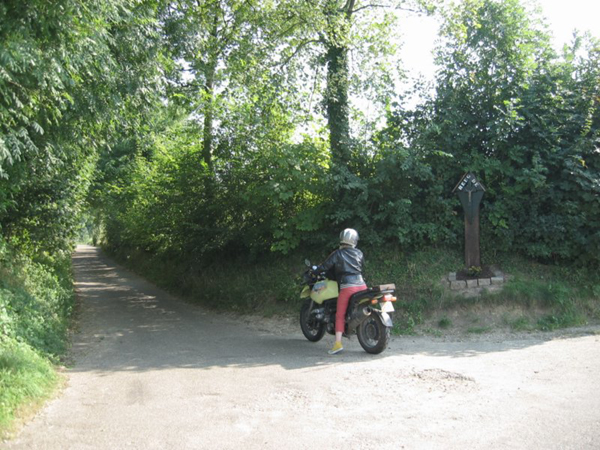
How do you know that you experience too much fear? When it gets in your way, simply said, and only then.
Others tell you you are too afraid
When somebody else tells you that you are "too afraid" on your motorcycle, be alert. There is nothing constructive about such a remark. It might boost the ego of the remarker, perhaps, who will realise, while telling you that you have too much fear, that he (or she) is less afraid. The question whether you have too much fear or not, is only answerable by you yourself.
When you take lessons, you might run into an instructor who tells you you are "too
afraid" for motorcycling. In fact, he then says: "I am not able to teach you
to ride."...
It's important not to let someone impose fear on you, by telling you you are afraid:
when it happens all the time, you'd better find another instructor.
You consider yourself too afraid
It might sound strange, but in fact, when you consider yourself too afraid, the same applies as in the case of an instructor who says so: you are not a good instructor for yourself. The only problem is: you are not able to find another one.
You can be the wrong kind of instructor for yourself in several ways:
You might have the idea that you are not allowed to make mistakes. So, when something goes wrong, it is automatically somebody else's or something else's fault. In the case that a sheep crossed your path, or that there is oil on the road, you didn't make a mistake, you tell yourself, and you feel confident that you cannot be blamed for what happened.
But the problem of such an attitude is that you throw away the control that you have over what happens to you, together with your guilt. Your internal instructor forgot that there is always something to learn, in every situation, also in the case that no one can blame you, also in the case where the other party is guilty.
Your internal istructor is also a bad one when he (or she) gives you assignments which are too difficult, when the criteria to succeed are too high. You tell yourself to go through a corner with too high a speed for your capabilities, or to ride between lanes too fast. Your instructor doesnt't take your experience into account, or the fact that learning takes time.
Fear for corners
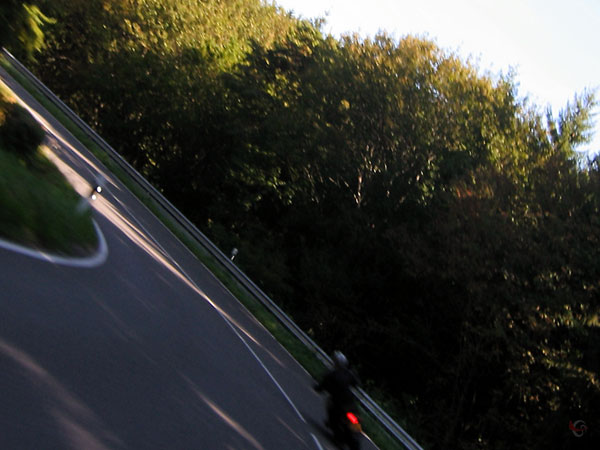
There are two kinds of corners that might induce fear: the tight corners for manoeuvring your bike (circles, U-turns) at slow speed, and the higher-speed corners you find on the road.
Corners on the road
When you get stressed by corners, the recepy, in fact, is really simple: enter them at lower speed!
Your brains are very busy when you enter a corner: determining the entering speed and the right gear, planning
the line through the corner, checking the surface of the road (long before you will be there!), evaluating the
traffic situation (also: long before you will be there), trying to remember to look ahead as
much as possible, etc.
The faster you ride, the faster your brains have to compute all those things. Your brains will ring the alarm when
they have to work too fast, and what you feel at such a moment is fear.
Remedy
What helps is simply ride slower towards the corner, and what helps is to practise more often
(with the result that your brains will be able to do the computing more by routine,
and will be able to do their job within a shorter time), what helps is to think about
how you ride corners, and to read about it (again, because your brains will more easily know
what the plan for a certain corner will be).
To read, check: Tips for cornering, on this site.
In short: gain experience, give yourself time, think about riding and read about it.
Body language
While cornering, you might watch your body language: when you keep your body relaxed, you will more easily feel relaxed yourself. You can try the following:
 Watch your hands: don't let them tighten on the handlebars; hold them loosely.
Watch your hands: don't let them tighten on the handlebars; hold them loosely.
 Watch your breath: let it be steady and deep.
Watch your breath: let it be steady and deep.
 Watch how you look: don't fixate one point; let your eyes "glide" through the corner,
far beyond where you are, and try to have a broad view at the same time.
Watch how you look: don't fixate one point; let your eyes "glide" through the corner,
far beyond where you are, and try to have a broad view at the same time.
Concentrate
Often, when you find yourself afraid for corners, you concentrate on speed, or on how much you lean: "See, I went much too slow through that corner", or "See, I could lean much more, my knee didn't touch the ground, I'm a sissy".
When you try, instead, to concentrate on the line you are planning to take, on the point where you want to lean in, on being steady on the throttle, on being prepared for the corner long before you enter it, you will probably no longer be afraid, and your speed will probably be higher (you won't notice because it doesn't feel that way, but objectively, it will be the case), and that your chickenline shrinks and shrinks.
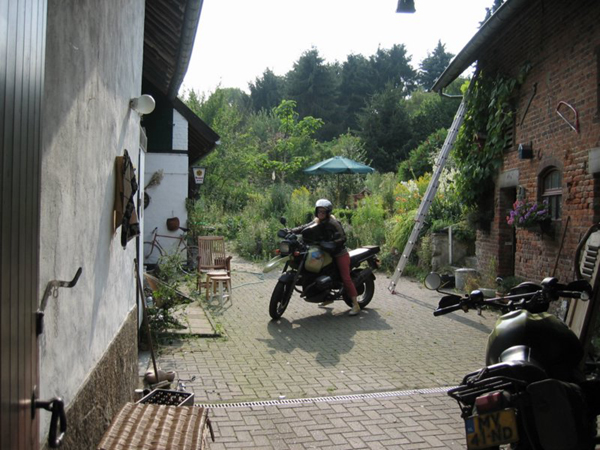
Tight corners
Another kind of corners are the tight corners that you make at slow speed while manoeuvring: sometimes, you get afraid for leaning your motorcycle at slow speed.
One of the problems with tight corners can be that your brains refuse to understand that
you can really lean at slow speed (my brains are among those brains...).
Another problem could be that you know that you will not be able to keep your motorcycle
from falling when you would have to come to a standstill during the manoeuvre, and you
constantly think about maintaining the possibility of stopping.
Leaning
When leaning during a figure of eight or a U-turn doesn't feel comfortable, you might
try doing the manoeuvre standing on the pegs instead of sitting on the saddle. It might seem
strange, but it will be much easier that way.
Tha point is, that you yourself will keep an upright position (well, with your hands at the
handlebars of course), while pushing the motorcycle away from you. Because you keep an upright
position, pushing the motorcycle away will come more naturally.
You also feel better what to do with your shoulders and hips, when you stand while riding a
circle.
Falling by stopping
When you once have experienced stalling your bike while taking a U-turn, it's hard to get rid of the thought that you should be able to stop during the whole turn. That makes it very hard to lean.
In that case: never perform these kind of manoeuvres with a cold engine: when you have
to make a u-turn with a cold engine you can always try the way that you see on the photograph...
In the same way, don't practice in an area with curbstones in your way: find a place where
you have space, lots of space, start with big circles and gradually tighten them.
And again: don't concentrate on how much you lean in, but on where you look (always further than you do), on how you use your shoulders, your hips, and how steady you can keep the speed.
Fear for braking
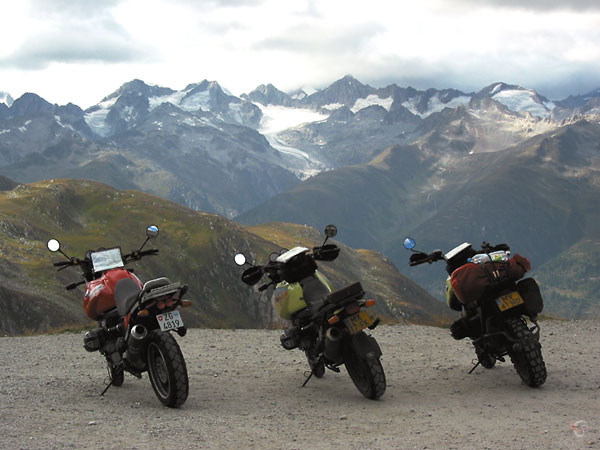
The fact that ABS gets more popular shows that many motorcyclists have some fear
for (hard) braking. And it *is* a fact that you are able to get yourself down by
grabbing your brakes brutally, in panic.
But when your motorcycle doesn't have ABS, it's possible to learn to make a panic
stop without going down.
Practise
The solution for fear of braking is: practise, practise, practise. Always practise, *also* in the case that you have an ABS-equipped bike! You can practice on an empty parking lot, or now and then while riding, when you are certain that there is no traffic behind you.
The general advice for a panic stop is to pull the clutch, and to stay away from the rear brake (unless you ride a cruiser-type motorcycle: in that case you certainly need the rear brake!). It pays to brake like that too when you practise or when you come to a stand-still under normal conditions, for a traffic light for instance: in that case, the chance that you will do the right thing in case of a real panic stop is high.
The idea of practising a lot is that braking will become an automatism, that braking will be part of the "memory" of your muscles.
Practise, but never force yourself into what you are not up to. Try to brake a little harder each time you practise. Apply the front brake, en then squeeze harder and harder. When you hear your front tire squirm, you are at the border between braking as hard as possible and locking your front. When you feel that the front locks, try to be relaxed: just loosen the grip on your front brake, and nothing will happen.
Easy does it
By exposing yourself gradually to hard braking, in controlled circumstances, you will see that your fear for braking on the road lessens, even in circumstances that are not under your control.
Being able to and dare to brake hard is a life saving capability!
Fear after an accident

The first time that you get on your bike after having an accident will feel very ,
eh, strange. The general advice is to get on your bike as soon as possible (medically
possible that is): the longer the pause, the harder it will be to get used to motorbiking again.
Allow yourself time to adjust again: don't expect that you immediately will ride
"as before", and don't be mistaken: we all have this tendency to idealize "as
it used to be"; there is a fair chance that you will always keep the idea
that you were a better rider before the accident, while in reality you will probably
get better than before.
Insecure about your capabilities
If you are to blame yourself for the accident because there was a moment of not
paying enough attention, a second problem may be that you doubt your own riding
capabilities. Try to realise that nobody is perfect all the time....
What you can do about it, is realise that riding a motorcycle is a learning
experience that will never be finished: what applies to you, applies to everybody.
Maybe your accident is just what you needed to be more alert, to think, to look, to practise.
And to sign in for an advanced rider's course.
On the page about safety on the motorcycle, you can check the important apsects, to get better in protecting yourself against accidents.
Insecure by bad luck
When you don't have to blame yourself for the accident, you might, strange as it may seem, feel insecure because of exactly that fact: if it was just a case of bad luck, you might run into the same bad luck today or tomorrow. And that bad luck might be worse, the next time.
It's one thing or the other: either you choose to believe that you could have
done something to prevent the accident, even in the case that you are not guilty legally,
or you choose to believe that it's completely the fault of the other (a driver,
animal, the government, a tree, gravel on the road, etc).
In the first case, you are able to learn something from the accident, with the result that in the future,
in circumstances similar to the accident, you will know what to do. But in the other case,
exactly the same could happen to you, and there would be nothing you could do about it.
So it seems a very attractive idea, that you really couldn't do anything about it, but in fact you prevent yourself from regaining control, by having such an attitude.
Mistakes, guilt, learning
The words "fault" or "mistake" are hard to take for many people.
Many motorcycle riders like the idea that they "can ride" after a couple of years
of riding and an advanced riding course, and that accidents that happen
after you reached that point are just a matter of bad luck.
But the fact is, of course, that you can always make adjustments to your ability to
look and think, to notice possibly dangerous situations, to predict behaviour of
other drivers and riders, and that everyone tends to forget part of what they heve learned
when they do'nt pay attention to it all the time.
The more kilometers or miles you ride, and especially the more active your attitude
is concerning learning and practising, the lower the chance of getting involved in an accident.
Part of that attitude is that you evaluate each (almost) accident, and try to see
what *you* could have done, what *you* could have seen, how *you* could have reacted.
It doesn't help you only to think about the faults of others. The most ideal situation
is that you can talk the accident over with people whom you know and whom you trust:
to have an objective view.
Of course, you shouldn't choose people who see mistakes as a personal flaw, and will try
to blame others, instead of trying to see what can be learned.
Fear for the wet
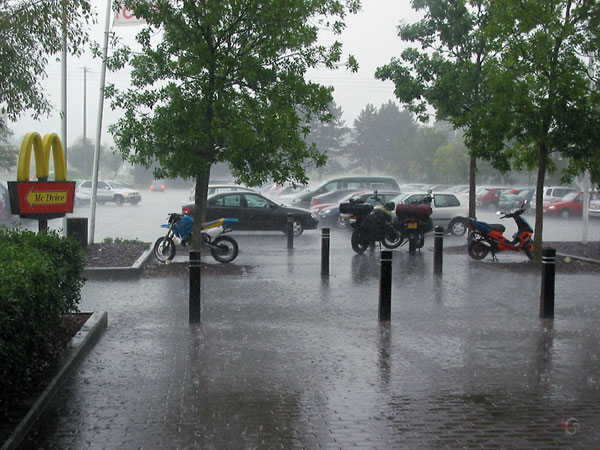
When you feel less comfortable on a wet surface, that's only normal: almost everybody will know the feeling. You should find out what is and what is not right about that feeling, and you should learn not to blame yourself constantly for not daring to lean in enough, or not daring to ride faster.
Slippery when wet
A wet road is not automatically a slippery road: in most cases, you can ride
almost as though the surface would be dry.
The problem is that, most of the time, you can't see where the slippery stretches are.
Oil, grit, pieces of repaired asfalt, mowed grass on the road: when it rains, you don't see such stretches by the combination of water on the road and on your visor.
So it's only right to keep that in mind, and adjust your speed!
Suspect
Places that are suspect when wet, because there will often be grease and diesel and such, are roundabouts (especially the outside: most roundabouts are built such that the inside is higher thatn the outside, with the result that rubbish will pile up at the outside) and traffic lights.
Aquaplaning
If you have experienced an aquaplaning car, that can be an extra factor in
your "rain-feelings".
Remember that motorcycle tires are round, so aquaplaning is a much more seldom phenomenum
than in a car. What you might experience in heavy rainfall, is the force you have to
overcome when you ride through a layer of water, for instant in the track formed by trucks
on the road. It's the same for your motorcycle as when you run through the see.
Tires
There can be a dramatic difference in how tires behave in the wet, and how they
feel on a wet surface. When you ride in all circumstances, it's advisable to try out
different brands (always a set, front and rear!), to find out about
experiences of others, or to ask other motorcyclists.
Tires of Michelin and Bridgestone with Silica perform amazingly well in the rain.
It can really make or break your pleasure in riding in the rain!
And for the rest?
When everything is ok, you have the perfect tires for the rain, you know what might be slippery and what not, and you still feel afraid in the rain, what then?
A very good advice I once read in Bike magazine, is the following:
Ride as if you sit on the back of your own bike, with you as the rider. Make
sure that your passenger (you), does *not* get afraid.
That means: be steady on the throttle, brake evenly, ride gentle lines. That's not
only the best way to keep your passenger happy, but happens to be the best way to
avoid sliding on a slippery road.
Fear for rubbish on the road
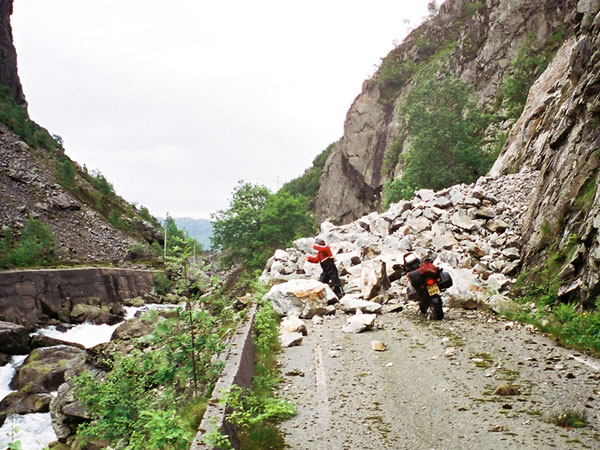
Oil, gravel, sand, grass, when you once did slide on it, it is possible that you expect it any moment under your front wheel.
Looking too close by
One of the consequences of that kind of thoughts may be that you end up
looking to the stretcj of road just in front of your front wheel, to check
the surface of the road.
But looking just in front of you, as a result, will make your corners less
fluently, and you will constantly be surprised by what happens with the road
or the traffic: it will only increase your feelings of fear.
The surface far ahead
So you have to train yourself into looking far ahead, and at the same time being able to check the surface of the road. Be very alert not to recheck the road in front of you after you did take a look far ahead.
It is, again, a matter of practice, practice, practice, until it comes automatically.
Ride through debris
It makes sense to get used to riding through grass or gravel.
You can try different approaches:
You could take an advanced riding course, where they teach you how to behave
when you get off the road,
.
you could buy an inexpensive offroad bike and start playing with it.
Or you could try to ride through the gravel, when
you see it on the road, to experience how it feels.
In case of scary stuff on the road: practise riding in a straight line, and keep your hands loosely on the handlebars. Your motorcycle should get the opportunity to find its own way, and you only hinder your bike when you tighten on the handlebars.
Fear to ride in the dark

When you ride when it's dark, for the first time, it seems as though you can't see anything, especially when it rains as well.
Hindrance of lights
When it gets dark, you are easily blinded by everything that emits light:
headlights, streetlamps, braking lights, even the lights on the back of a
car or motorcycle, or signs with reflecting material.
You'll have to learn not to look directly towards those things.
Even then, you will get the feeling, when somebody drives towards you with blinding headlights, that you kind of dive into a black hole. The only solution for that problem is to look ahead as far as possible, when there is no oncoming traffic (yes, I can't imagine a situation where that rule doesn't apply), and in case of an oncoming vehicle, you will have to trust that you did look well enough. Of course, you can always close the throttle in such a situation, when there is no one behind you.
When you see a sign with reflective material, remember to change your headlight from high beam to dipped beam: it really makes a difference in the degree of blinding.
Make sure your visor is clean, and isn't scratched: otherwise, you will experience the halo effect around any lights.
You do see more in the dark!
The funny thing is, there is a very positive side about riding in the dark: you can spot an oncoming vehicle before it has come around the corner, at a spot where you wouldn't be able to see it in daylight.
Of course, that advantage of the dark only applies to vehicles with lights (and not for people walking, or bicycles or farmer vehicles without lights), but still, it's an advantage.
In short
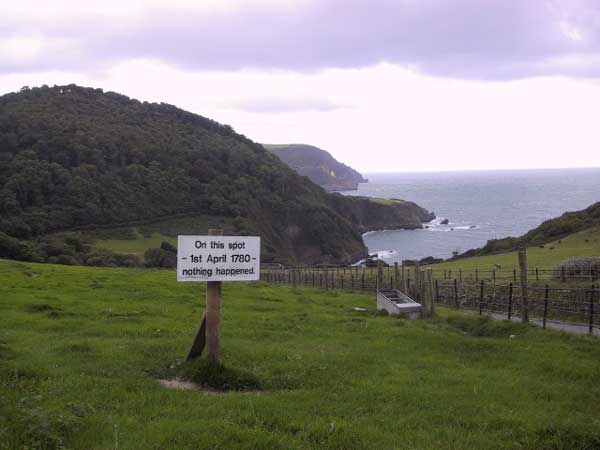
What it all boils down to is:
 Find out about the facts: read, ask and think.
Find out about the facts: read, ask and think.
 Gradually expose yourself to what you are afraid of (the "gradually"
part is the most important).
Gradually expose yourself to what you are afraid of (the "gradually"
part is the most important).
 Take precautions not to induce the fear (by concentrating on other things).
Take precautions not to induce the fear (by concentrating on other things).
 Don't ask performances of yourself that you're not (yet) up to.
Don't ask performances of yourself that you're not (yet) up to.
 Keep the responsibility for yourself with you, and don't give it away to others,
to the road, etc: realise that in every situation, you can make a difference,
and that you can learn from it.
Keep the responsibility for yourself with you, and don't give it away to others,
to the road, etc: realise that in every situation, you can make a difference,
and that you can learn from it.
Your pleasure in riding will come back like that, and with it, the always promised feeling of freedom...
Comments, Q & A, on a separate page




